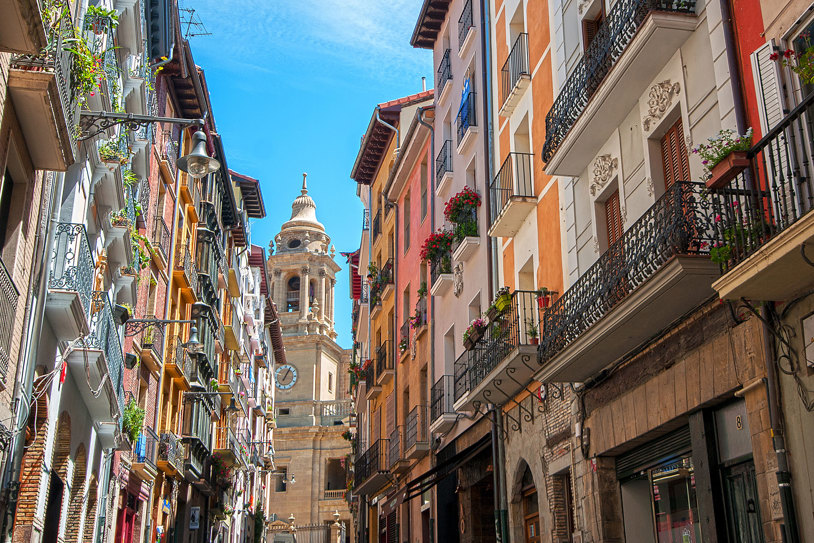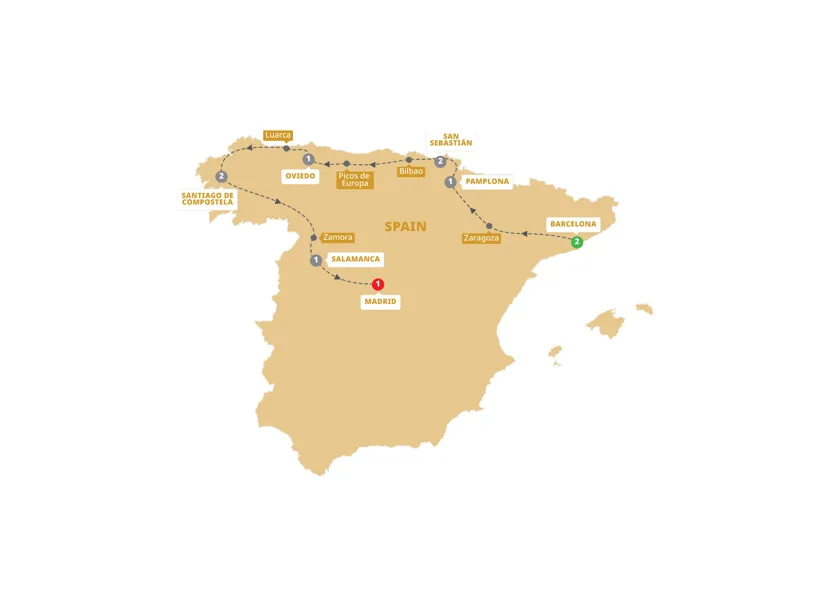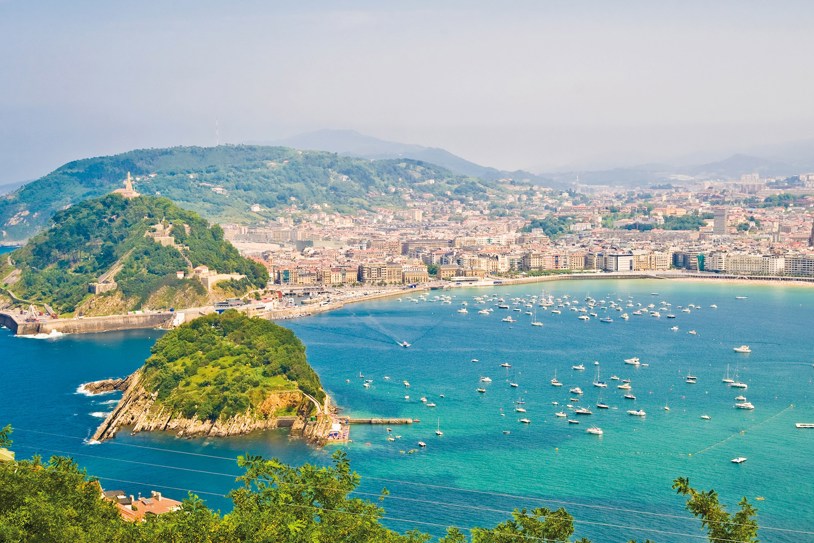Find your favorite tapas ingredients on a tour through Spain
A Beginner's Guide
to Spanish Tapas
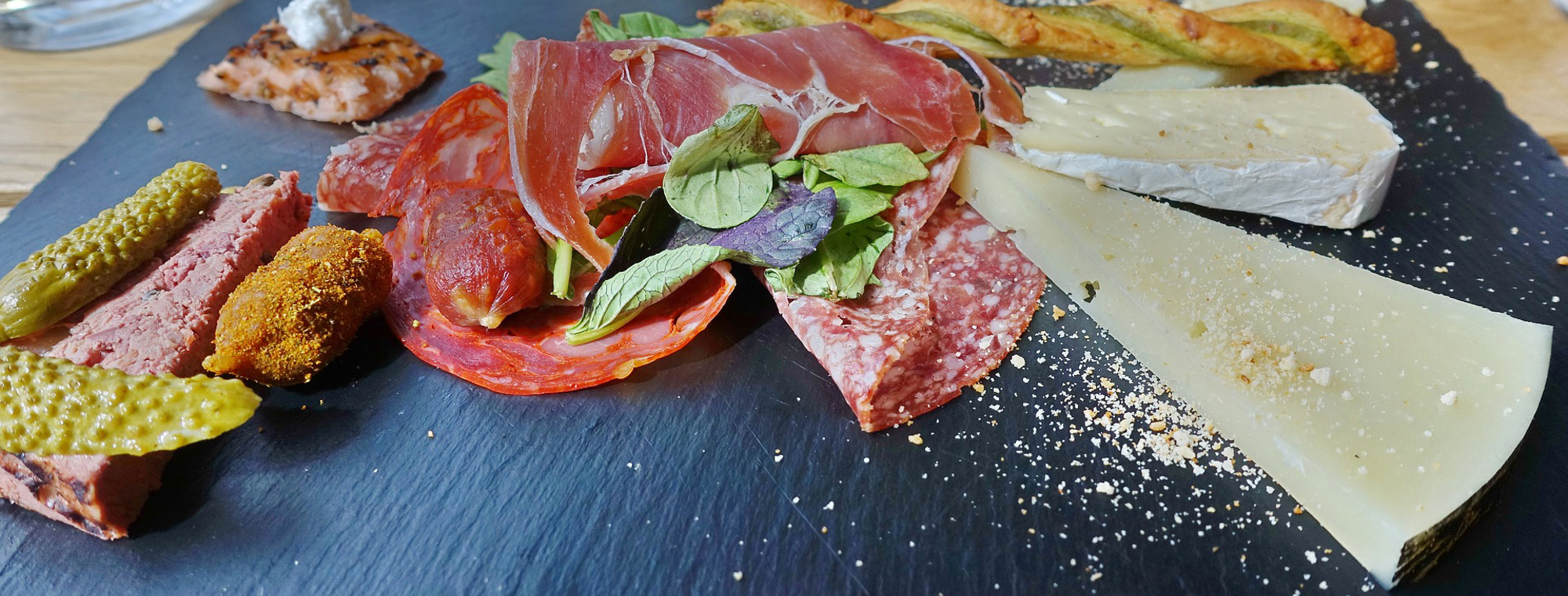
In Spain, dinner is typically served between 9 and 11 p.m., leaving significant time between work and dinner for hunger to strike. Enter the country’s beloved tradition of eating tapas that has evolved into an important part of Spanish cuisine. More than just a way of eating, Spanish tapas illuminate a way of life: a culture that prioritizes leisurely meals and casual socializing.
What Does Tapas Mean?
In Spanish, "tapa" translates to "cover" or "lid." The tradition of taps started in Spanish taverns with free bites to eat when a patron ordered a drink. The small dish that held the tapas was placed on top of the ordered drink - literally covering the glass as a lid!
What Are Tapas?
Tapas are basically a wide variety of appetizers or snacks. These sampler-sized dishes are built for sharing. Some are small portions of entrees such as stews or paella, also orderable as a half (media ración) or full portion (ración). Others, such as a plate of paper-thin leaves of Iberico ham, fill an appetizer role.
Hot or cold, traditional or innovative, tapas provide the perfect introduction to the food of Spain, letting you try a variety of dishes and sample some unfamiliar ingredients with minimal commitment. Blood sausage, octopus, salt cod: These are quintessential Spanish cuisine, which the cautiously adventurous may prefer to try in small quantities.
Where Is the Best Place to Eat Tapas in Spain?
No trip to Spain is complete without a visit to a Tasca - a tavern that serves tapas. You can experience a variety of tapas at restaurants and Tascas across Spain. (If you're lucky enough to visit San Sebastián, Spain, try the local Basque interpretation, known as pintxos.) Because tapas are informal, and these bars are often busy, it’s not uncommon to eat standing up at the bar or at small tables. Order a caña, small beer or a chato, glass of wine, to sip as you enjoy the selection of small bites and convivial atmosphere.
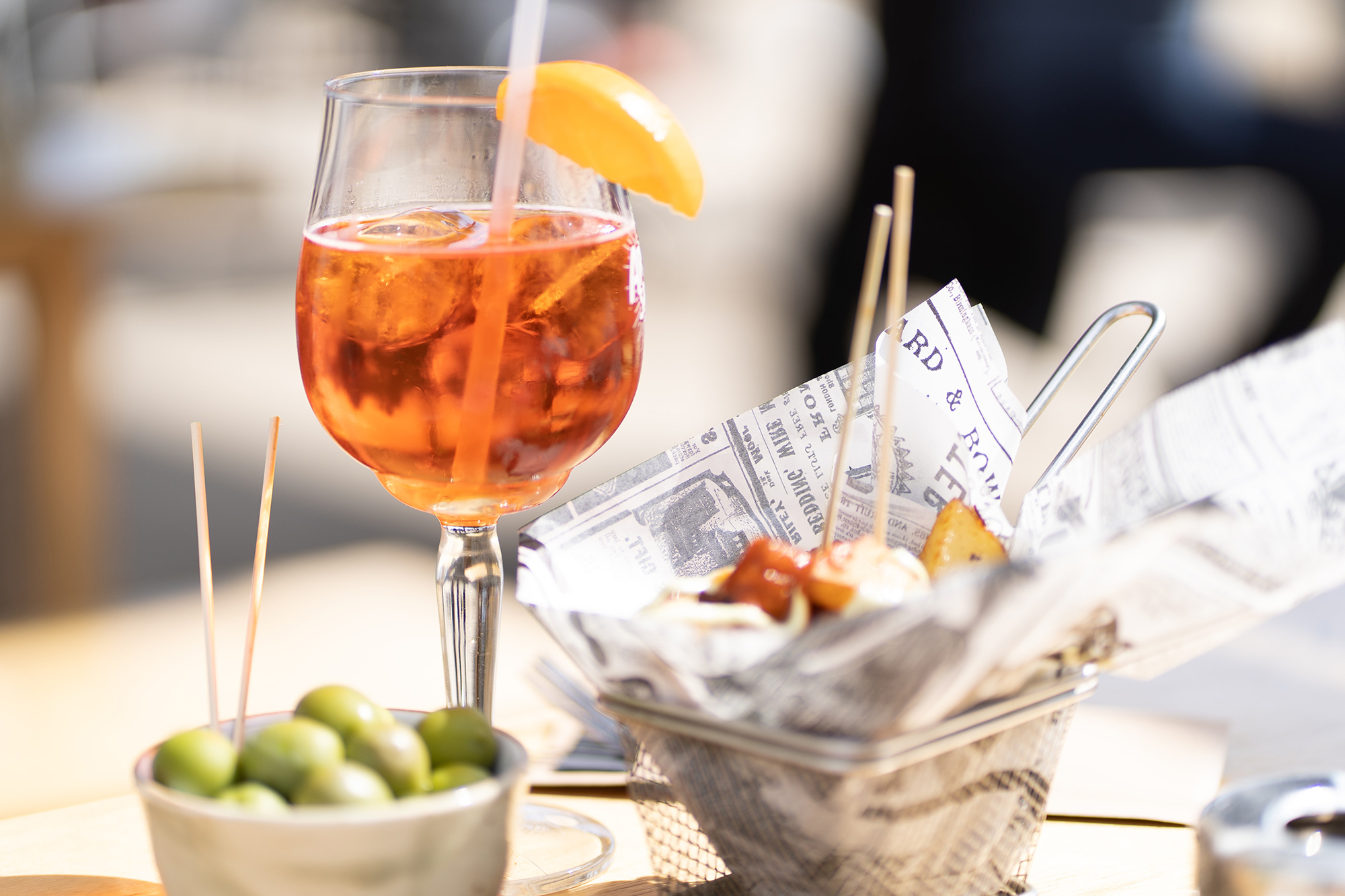
When to Eat Tapas
In every city you visit, stop in as many tapas bars as you can to try a variety of ingredients that vary depending on where you are. Lingering over wine, beer, or hard cider, locals order tapas a few at a time, as an appetizer or a meal. Hot tapas are often ordered off the menu, while cold tapas may be displayed at the bar. Locals savor them at lunch, from about 1:30 until 3:30, and again in the evening from around 8:30 until midnight – remember Spaniards generally dine late.
What Ingredients Are in Spanish Tapas?
Ingredients in tapas reflect the wide-ranging Spanish palate. Every imaginable meat and seafood makes an appearance, along with cheese and seasonal vegetables. Culinary traditions employ ingredients seldom seen on the American table. Travelers familiar with shrimp and scallops may shrink at bacalao (salt cod), squid, even barnacles, and snails. Blood sausage, foie gras (liver of a fatted duck or goose), and other organ meats may also be on the menu. Don't worry, though, there are also plenty of dishes relying on familiar ingredients: ham, pork, beef, sardines, anchovies, potatoes.
Spices are vibrant and flavorful, but seldom hot. Paprika, saffron, garlic, sweet peppers, olive oil, vinegar, and herbs are expertly combined to a luscious effect, reflecting Spain’s history as a crossroads of the Mediterranean Sea.
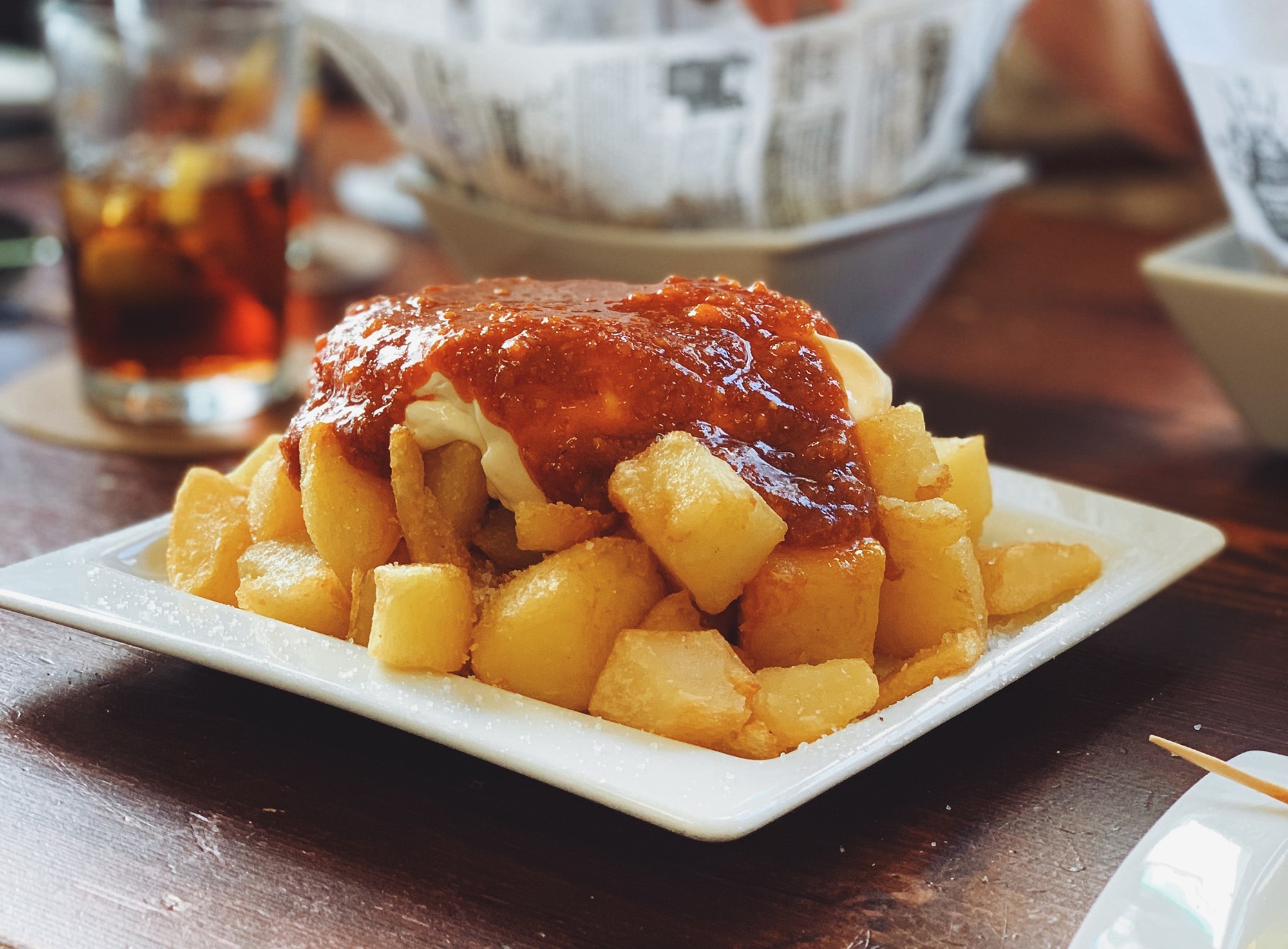
Top 15 Tapas Dishes to Order in Spain
Tortilla de Patata
Name notwithstanding, a Tortilla de Patata has no relation to the Mexican tortilla. This hugely popular tapa is a simple, rustic potato frittata. Fried potatoes and onions are cooked with eggs, lightly browned on both sides, and cut in wedges.
Patatas Bravas
Instead of French fries, think Patatas Bravas. These potatoes, fried to perfection, are topped with a vibrant paprika-tinged sauce.
Spanish Croquettes Tapas
Croquettes are breaded, fried nuggets of béchamel stuffed with savory extras like ham, cheese, and cod.
Jamón Tapas
Jamón is ham, one of Spain’s most celebrated culinary achievements. Assorted varieties have cult-like followings, with the cured Iberian acorn-fed ham, Jamón Ibérico, arguably at the top of the heap.
Aceitunas Tapas
Aceitunas are olives, often served with herbs, peppers, or anchovies.
Bacalao Tapas
Bacalao is a tasty salt cod, breaded and fried or stewed in tomato sauce.
Calamares Tapas
Nothing truly new here, as calamares are simply fried squid rings.
Pimientos Rellenos Tapas
Pimientos Rellenos are bell peppers stuffed with a variety of ingredients. You'll typically find minced meat, olives, and cheese on the menu.
Albondigas Tapas
Spanish meatballs, known as albondigas, are amazing meatballs in tomato sauce, often with aromatic herbs.
Boquerones Tapas
Boquerones are delicate white anchovies served in vinegar or deep-fried.
Gambas Tapas
Gambas are prawns in salsa negra - peppercorn sauce, al ajillo - with garlic, or pil-pil - with chopped chili peppers. Gambas al ajillo is one of the most popular tapas dishes in Spain!
Sardinas en Tomate Tapas
Sardinas en tomate are preserved sardines served over crusty bread with tomato.
Pulpo al la Gallega Tapas
Pulpo a la Gallega is a traditional and simple octopus tapas dish that originates from the northwest region of Galicia in Spain. Known there as Pulpo a Feira, meaning "fair-style octopus," the dish is typically served with boiled potatoes, olive oil, and sweet Spanish paprika.
Chorizo al Vino Tapas
Chorizo al vino, or chorizo con vino, is a spicy chorizo sausage slowly cooked in wine and served at times with herbs.
Montaditos Tapas
Montaditos are one of the most basic tapas, but you'll find varieties of them at almost every Tasca. Motaditos are small slices of bread/toast topped with combinations of seasonal seafood, meats, cheeses, vegetables, and sauces - basically any ingredient you can think of.
Not Feeling Too Adventurous? Cautious Diners Take Comfort
When you're out at a Tasca, don't worry about the menu if you're not in a brave mood. Bread, olives, ham, and cheese are always available. The thousands of olive trees dotting the hillsides of Spain mean cured olives are a local art form. The internationally celebrated sheep’s milk cheese, Manchego, is one of the dozens of domestic cheeses. With fresh crusty bread, incredible ham, and cheese for every palate, you’ll never go wanting.



